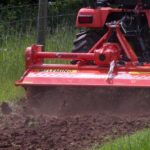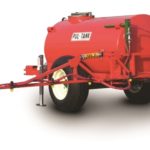By Ann Macharia
Agriculture is among the main pillars of our economy; it contributes to 27 percent of our Gross Domestic Product (GDP) and 65 percent of our total export earnings.
The increasing human population has resulted in a decrease in the land to cultivate; this has led to scarcity especially due to real estate’s development. This, therefore, demands an increase in production per unit area at the lowest cost possible. This will help to ensure constant food supply and zero hunger in our nation. The use of technology plays a significant role in increasing efficiency and boosting agricultural productivity and resilience while ensuring sustainability.
Farming as a Business
Farming is just like any other business, and hence farmers need to have a business plan for their farms, this involves having an investment plan and crop budget.
This serves as an indicator of all the activities and total cost of production that the farmer is likely to incur during the entire production and the expected yields.
The incorporation of technology in Agriculture has led to the development of farm management software aids in facilitating automation of all farm activities such as; record-keeping, data storage, monitoring and analyzing. This kind of technology has made it easy for the farmers to identify if they are making profit/ losses and it’s being adopted at a fast growth rate.
The execution of the business plan starts from the land preparation. The nature of the soil determines the kind of implements to be used to obtain the required soil tilth.
Technology in Farming: Rotavators or bedformers
In areas prone to flooding and poor drainage especially in black cotton soils, beds are prepared using a rotavator commonly referred to as a bed former. This prevents the formation of hardpans as one leaves 30cm from one bed to the other which serves as a path and a working area. Use of the bed former saves times and raising the beds ensures easy management of crops.

A sample rotavator also commonly known as a bed former. Photo courtesy of Fleming Agri products
During planting, farmers can employ mechanization, for example, using the planting machines. Planting machines encourages precision planting and saves time and cost of labor. At the same time, a farmer can also easily apply fertilizer and manure during planting with the help of a planting machine.
Social Media and Mobile apps
There are mobile apps that farmers can use to diagnose crop diseases and enhance their crop quality. One such app is Plantix which enables farmers to diagnose plant diseases through their mobile phone. This reduces post-harvest losses through provisions of timely and accurate information directly to the farmer’s phone. The use of drones is also an effective method in the control of pest and diseases. The drones are mounted with a near-infrared or remote sensor that is capable of detecting pests and diseases. This is a crop health monitoring based on Normalized Differences Vegetation Index (NDVI). This gives an early warning to the farmer on the pest infestation, and its precision is more accurate compared to the human eyes since they have high-resolution images. This helps to minimize the use of chemicals to control pests and diseases.
The use of social media such as WhatsApp groups, Facebook, and Instagram among others is also becoming very widespread. Farmers can very easily use the platforms to interact with other farmers from all over the world to exchange ideas, challenges and possible solutions which helps them to improve on their productivity. Marketing of farm produce has also been made easier by farmers using such platforms to access markets thus minimizing the role of middlemen and brokers who exploit them. For example, through online shopping consumers are now able to order the products they require, and they are delivered to them directly.
Boom Sprayers
The use of manual knapsacks is swiftly being replaced by the boom sprayer made up of two wheels and a tank where water and chemicals are put. The boom sprayer has a mortar that sucks the pesticides from the tanks and flows through the pipes. It’s easier to spray, less cumbersome and can be used in large scale farming, unlike the manual knapsack. However motorized knapsack has also be invented which has made work easier since one does not require to keep on pressuring it up.

A sample boom sprayer that both small- and large-scale farmers can use. Photo courtesy of oescoinc.com
GPS and Satellite weather monitoring techniques
The increase in global warming has resulted in climatic changes resulting in high-temperature fluctuations and irregular rainfall patterns. However, the use of GPS and satellite technology is helping to forecast the weather conditions and give farmers a heads up on the necessary action. One such example is CropMon, an information service by the Netherlands Space Office (NSO). Cereal Growers Association (CGA) is a key CropMon partner and CGA farmer members are registered on the platform at no cost. Farmers that are registered to the platform access timely weather and plant health updates that guide their farm activities. Farmers that are members of CGA a greatly benefitted from the service offered by CropMon.
Precision irrigation
In dry areas, boreholes are helping to provide irrigation water. To minimize the cost of pumping water, the installation of solar panels and windmills that are both environmentally friendly and pocket-friendly compared to the use of electricity. This technology is on the rise since it ensures the production of food in dry seasons.
Precision irrigation systems provide water at the root zone hence little water wastage. Fertigation involves the application of fertilizer and water at the same time is a technique that is readily achievable with precision irrigation. Also, precision irrigation prevents leaves diseases especially the fungal that is quickly spread by water.

A picture sample of a precision irrigation system. Photo courtesy of CGA
The use of soil moisture sensors to determine the soil moisture can also play a significant role in helping farmers pick out the best watering regime.
Inorganic Mulching
The use of inorganic mulch materials such a plastic covering of about 300 microns colored black on the lower side and white on the upper side smoothers the growth of weeds while conserving soil moisture. This is because it deprives the weeds light thus affecting their growth. The white reflects light for crops above enhancing the process photosynthesis.

Inorganic mulching materials. Photo courtesy of cropinsurancesolutions.com
Soil Testing
To develop efficient fertilizer programs for specific crop farmers have taken the initiative of conducting the soil analysis. Simple soil kit gadgets such as the agrocares soil testing kit are used to test the soil and gives the farmers recommendations on soil improvement on the spot. This is handheld gadgets and mobile linked to Bluetooth application makes it easier for the extension officers to understand the soil and advise the farmers accordingly on the type of fertilizer to use on their soil. This helps to improve the yields and reduces wastage since the farmers provide the right inputs at the right stage and amount to the crop. CGA has been working together with agrocares in Kenya to offer soil testing services to farmers at only seven hundred shillings.
Plant Breeding
Plant breeding has made possible the production of seeds that are resistant to disease and pests. These hybrid breeds of seeds are more productive thus increasing the output per unit area. For example, Plant breeding has made it possible to increase the production of Irish potatoes through certified seeds that use the rooting apical cuttings technology. Plant breeding has led to the introduction of new crop varieties with reduced growth period, high yielding and with prolonged shelf life attracting more consumers.
While raising seedlings the use of substrates such as cocopeat, vermiculite, and peat moss helps to raise seedling that is free of pest and diseases giving the plants a good start, the seedlings trays are filled with this media, and the seeds sowed precisely in each cell. It’s easy to carry out the management practices, and the germination percentage is quickly determined to enable the farmer to plan effectively.
